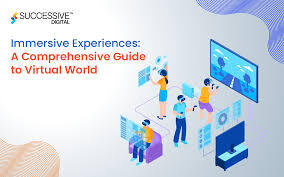
Creating immersive experiences for customers involves deeply engaging them through sensory elements, interactivity, and personalized content, offering a unique form of entertainment where participants become integral to the experience.
Types of Immersive Experiences
Virtual Reality (VR):
Virtual reality immerses participants in a simulated environment through a headset that covers their eyes, transporting them to an entirely different world. The ability to interact with surroundings makes VR particularly compelling for applications like education and training. For instance, medical students can practice surgeries, architects can explore virtual building models, and astronauts can simulate space missions, all in realistic virtual environments.Augmented Reality (AR)
Augmented reality enhances the participant's real-world environment by overlaying digital elements. AR experiences can include seeing fictional creatures in real environments or interacting with virtual objects using handheld devices. AR gaming, for example, merges game elements with real-world surroundings, creating engaging and interactive experiences for players.Mixed Reality (MR)
Mixed reality blends virtual and augmented reality, enabling participants to interact with both real and virtual elements simultaneously. MR experiences integrate virtual objects into the physical environment through specialized headsets. This technology holds potential for transforming collaboration by allowing global teams to interact with the same virtual objects in real-time virtual meetings, enhancing efficiency and reducing costs.360-Degree Video and Photography
360-degree video and photography offer a more passive yet immersive experience where participants can explore their surroundings by looking in any direction. This technology is particularly impactful in tourism, where viewers can preview destinations and plan trips based on immersive virtual tours.